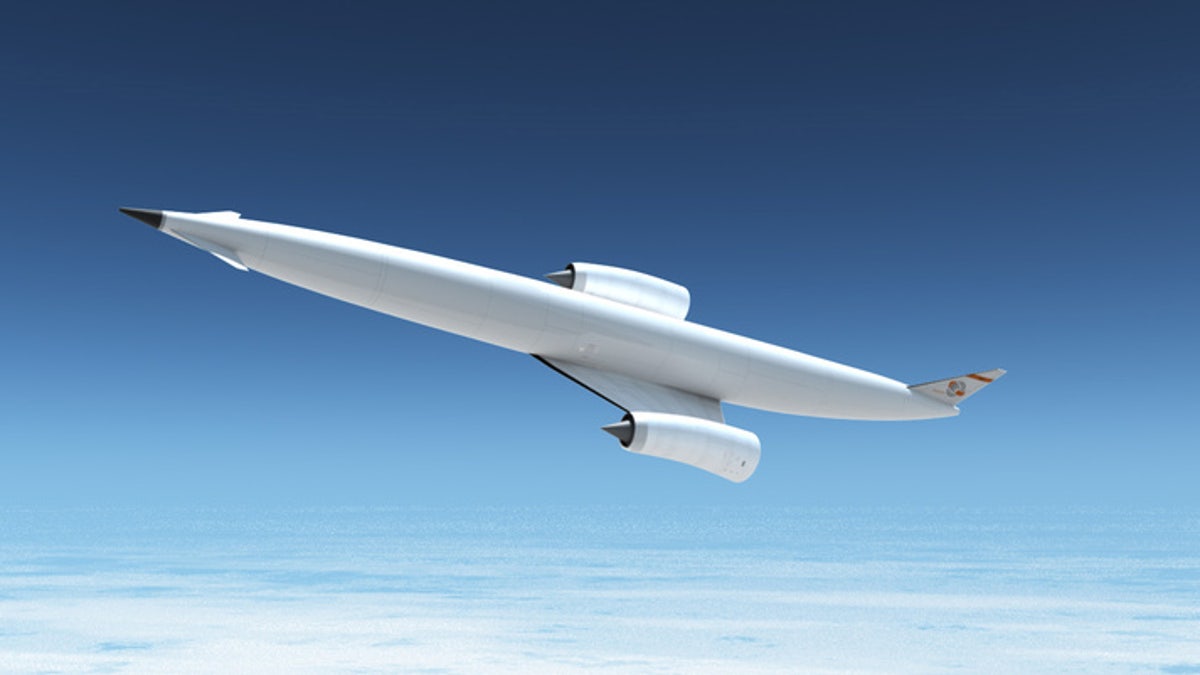
(BAE Systems)
British defense contractor BAE Systems, one of the world's foremost purveyors of futuristic defense technologies, just officially announced that it plans to invest roughly $31.7 million to help develop a hybrid rocket engine with Britain's Reaction Engines Limited. If completed, the Synergistic Air-Breathing Rocket Engine -- or SABRE for short -- would revolutionize the industry of space travel with its ability to operate not only in outer space, but within Earth's atmosphere as well. Though testing is still likely many years out, the new cash infusion from BAE Systems will allow REL to expand its research and officially complete a test model.
"This investment by BAE Systems reflects the strength of British engineering and technology and our ambitions as a leading space nation," says MP Jo Johnson, the United Kingdom's Minister for Universities and Science. "I am sure that this partnership will strengthen both organizations -- helping to create more jobs in the UK's growing space sector and ultimately to make the SABRE engine a reality."
In production since 1989, REL's SABRE engine has garnered heaps of attention in recent years following the increasing popularity commercial space travel. Seen by many in Britain as an engineering marvel similar in hype to the unsuccessful Concorde, what sets the engine apart is its compatibility with a wide range of vehicles. Whereas REL intends to use it in its own space plane called the Skylon, the tech doesn't have to exist solely on that craft to be functional.
Related: NASA confirms that the ‘impossible’ EmDrive thruster really works, after new tests
According to REL's website, the finished engine will boast the ability to fly aircraft into single-stage orbit, allowing for what it calls "reliable, responsive, and cost effective space access." Additionally, SABRE's other arrangement would allow any vehicle outfitted with it to fly at speeds roughly five times that of the speed of sound while inside Earth's atmosphere. To achieve this, the engine features two different operational modes: air-breathing mode and conventional rocket mode.
![95da80d2-[]](https://a57.foxnews.com/static.foxnews.com/foxnews.com/content/uploads/2018/09/1200/675/BAESabreEngine.jpg?ve=1&tl=1)
SABRE aerospace engine. (BAE Systems)
While in air-breathing mode, the SABRE sucks in atmospheric air to absorb oxygen similar to how a regular jet engine does. It then burns the oxygen with its on-board liquid hydrogen fuel stored in the rocket combustion chamber. Upon leaving Earth's atmosphere, conventional rocket mode kicks in, switching the engine to start using stored liquid oxygen for the SABRE's continued thrust.
Perhaps REL's greatest breakthrough with the engine was how the company developed a reliable system for the engine to avoid amassing frost. Though the researchers remained secretive about the actual method, it was recently revealed that the engine uses a specially-engineered pre-cooler system to chill consumed air from over 1,800 degrees Fahrenheit down to negative 240 degrees Fahrenheit in under .01 seconds. By using a methanol injection to function as the engine's antifreeze, REL was able to overcome one of the rocket's biggest obstacles.
As BAE Systems and REL continue to conduct research and development on the innovative SABRE rocket, the hope is to begin ground-based testing by as early as 2020, with unmanned test flights beginning in 2025. As is the case with nearly every prototype, actual testing will likely occur later than intended, but even so, the newly-established partnership between BAE and RAL certainly bodes well for the future of commercial space travel.
